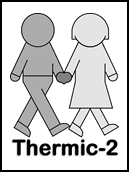A Randomised Controlled Trial to Compare Normothermic Versus Hypothermic Cardiopulmonary Bypass in Children Undergoing Open Heart Surgery
When we operate on the heart we stop the heart and use a heart-lung bypass machine to pump the blood around the body. At the moment it is normal for the blood to be cooled down during the operation (‘hypothermic perfusion’). It is then warmed to a normal temperature again at the end of surgery.
This technique (sometimes called “whole body cooling”) is standard practice at the Bristol Children’s Hospital. We now think that it could be better to keep the blood at normal body temperature during the operation (‘normothermic perfusion’) instead of cooling it. Research on adults who need heart surgery has shown that it might be even better to leave blood at its normal temperature and not cool it down. The effects of the two techniques on younger people have not yet been directly compared so we do not know which is best.
The reason for this study is to compare the two temperatures used (hypothermic and normothermic) and look at their effects on the heart and other organs in detail. We will also look at whether the blood temperature used during the operation has an effect on memory and language skills and physical and social development at 3 months and 1 year post-operation.
Thermic-2 is a single-centre, randomised controlled trial. A total of 141 patients have been successfully randomised over 2 years and 10 months and followed-up for 1 year. A protocol paper was published in May 2015 in JMIR Research Protocols, and the study outcome paper was published in October 2018 in Heart.
The Thermic-2 study is funded by the National Institute for Health Research (NIHR) Bristol Cardiovascular Biomedical Research Unit. The views and opinions expressed herein are those of the authors and do not necessarily reflect those of the NIHR, NHS or the Department of Health. This study is sponsored by the University Hospitals Bristol NHS Foundation Trust. All surgery has been performed at the Bristol Royal Hospital for Children

